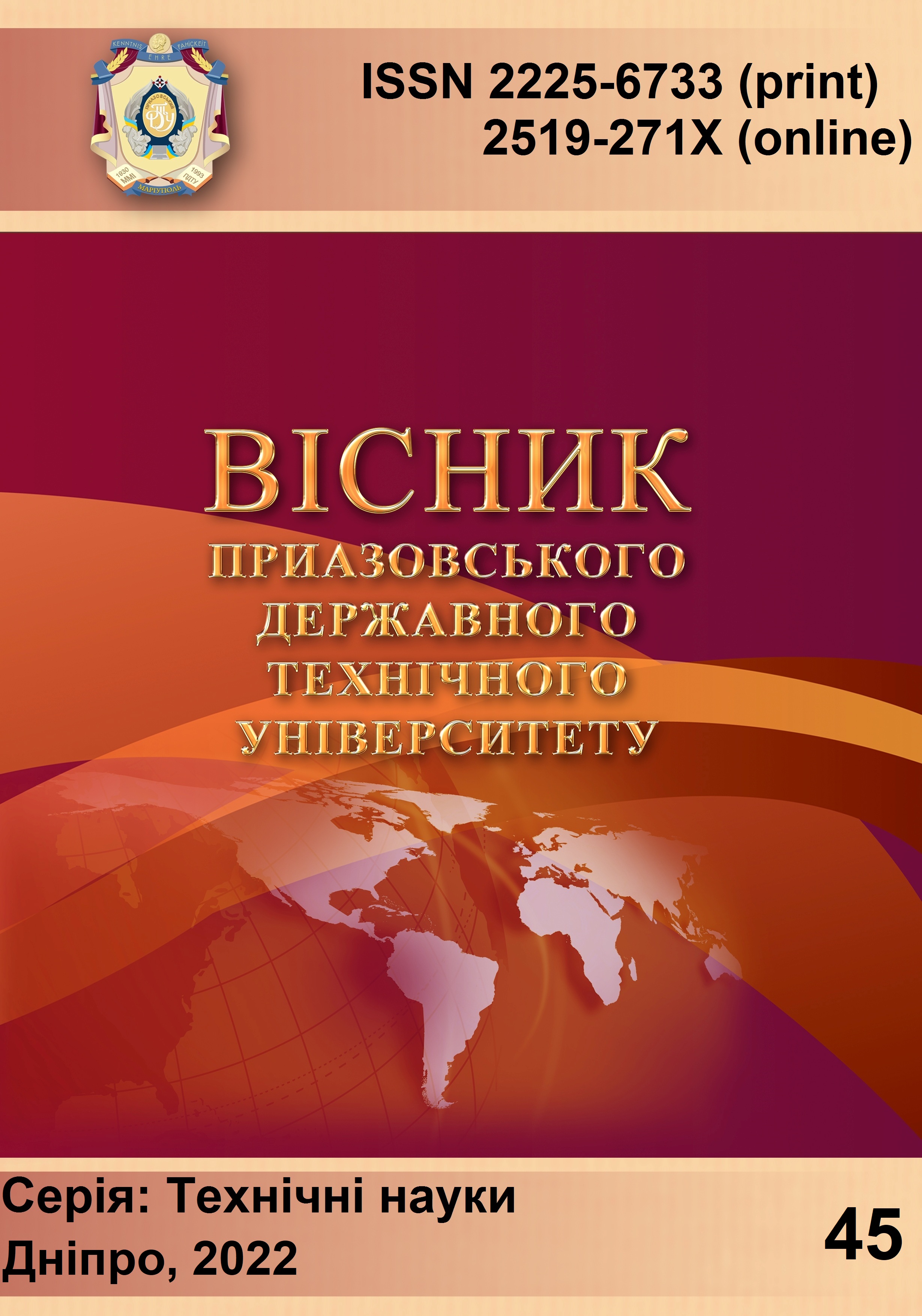Інструментарій для опису та управління подієвими ризиками
DOI:
https://doi.org/10.31498/2225-6733.45.2022.276240Ключові слова:
ризик, подія, нейронна мережа, прогнозування ризику, автотранспортні перевезенняАнотація
В основі роботи знаходиться положення про те, що імовірнісно-статистичні методи оцінки ризиків у сучасній інженерії вже не відповідають потребам користувачів у різних галузях людської діяльності. У роботі показані можливості нейронних мереж як механізм прогнозування ризиків від небажаних подій у різних сферах застосування. Розроблено трисинапсну модель перцептрону прямого поширення для вирішення задачі про автомобільні транспортування легкозаймистих рідин, зокрема бензину, що є дуже актуальним для сучасного стану питання в Україні. Систематизовано попередні вагові коефіцієнти для кожної вхідної дії. Створені програмні продукти з використанням мови Python і додатків Keras, що дозволяють працювати з нейронними мережами такого роду. Показані результати «навчання» трисинапсної моделі для вирішення аналогічних завдань. На прикладі показано результати навчання нейронної мережі, зокрема, розраховано результуючі значення вагових коефіцієнтів. Показано роботу такої мережі. Методично відпрацьовано механізм прогнозування ризиків, пов'язаних з аваріями за деяких найбільш актуальних умов автоперевезень. Підсумком роботи моделі є уявлення про те, що в зазначений період транспортування бензину в автоцистерні заданої конфігурації з конкретним обсягом перевезення та заданим станом автошляхів, основний ризик, орієнтований на сукупність можливих подієвих факторів, пов'язаний з накопиченням електростатичних зарядів в результаті розгойдування системи в дорозі з наступним вибухом, наприклад, при зливі рідини у місці призначення. Причому такий ризик є однозначним і не залежить від стану інших параметрів системи. Результати аналізу підтверджуються практичними даними, а саме ризики, пов'язані з накопиченням статичної електрики, мають механізми нейтралізації ще до їх появлення. Показано залежність обсягу накопичення електростатичних зарядів від тривалості транспортування рідини
Посилання
Демин В.Ф. Научно-методические аспекты оценки риска / В.Ф. Демин // Атомная энергия. – Том 86, вып. 1. – 1999. – С. 46-63.
Пампуро В.И. Методологические ограничения метода дерева событий / В.И. Пампуро // Доповiдi Нацiональної академiї наук України. – 2008. – № 12. – С. 161-165.
Рудометкин С.В. Развитие механизмов риск-инжиниринга для укрепления экономиче-ской безопасности производственных предприятий: на материалах Ставропольского края : дис. ... канд. экон. наук : 08.00.05 / Рудометкин Сергей Владимирович. – Ставрополь, 2012. – 167 с.
Beck U. Risk Society: Toward a New Modernity / U. Beck. – Sage Pubns Ltd, 1992. – 142 р.
Луман Н. Общество, интеракция, социальная солидарность / Н. Луман // Человек. – 1996. – № 3. – С. 152-167.
Zhao D. Method of risk evaluation of information security based on neural network / D. Zhao, J. Liu, Z. Zhang // IEEE international Conference on Machine Learning and Cybernetics. – 2009. – Vol. 1, № 6. – Pp. 1127-1132. – Mode of access: https://doi.org/10.1109/ICMLC.2009.5212464.
Уоссермен Ф. Нейрокомпьютерная техника: Теория и практика. – 1992. – 184 с. – Режим доступу: http://www.immsp.kiev.ua/postgraduate/Biblioteka_trudy/NejpokomputernTechnikaUossermen1992.pdf.
##submission.downloads##
Опубліковано
Як цитувати
Номер
Розділ
Ліцензія
Журнал "Вісник Приазовського державного технічного університету. Серія: Технічні науки" видається під ліцензією СС-BY (Ліцензія «Із зазначенням авторства»).
Дана ліцензія дозволяє поширювати, редагувати, поправляти і брати твір за основу для похідних навіть на комерційній основі із зазначенням авторства. Це найзручніша з усіх пропонованих ліцензій. Рекомендується для максимального поширення і використання неліцензійних матеріалів.
Автори, які публікуються в цьому журналі, погоджуються з наступними умовами:
1. Автори залишають за собою право на авторство своєї роботи та передають журналу право першої публікації цієї роботи на умовах ліцензії Creative Commons Attribution License, яка дозволяє іншим особам вільно розповсюджувати опубліковану роботу з обов'язковим посиланням на авторів оригінальної роботи та першу публікацію роботи в цьому журналі.
2. Автори мають право укладати самостійні додаткові угоди, які стосуються неексклюзивного поширення роботи в тому вигляді, в якому вона була опублікована цим журналом (наприклад, розміщувати роботу в електронному сховищі установи або публікувати у складі монографії), за умови збереження посилання на першу публікацію роботи в цьому журналі.









